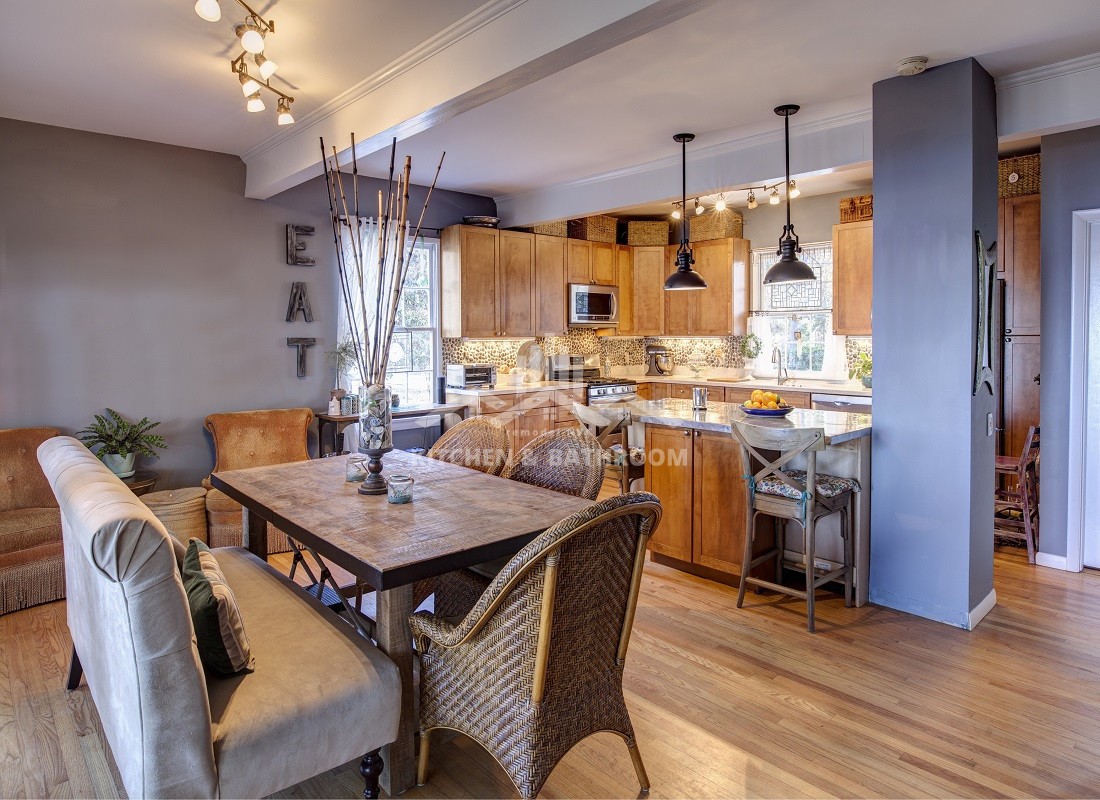
Open Concept Small Kitchen Remodel: Transforming Your Space
In the contemporary hustle and bustle of life, the kitchen has transformed beyond a mere meal preparation space into the very soul of the household. As the hub of activity, your kitchen should be functional, inviting, and adaptable to your needs. This is where the concept of an open concept small kitchen remodel comes into play. In this article, we’ll explore the advantages of open concept designs for small kitchens and guide you through the steps to achieve your dream kitchen transformation.
Understanding the Open Concept Kitchen
Embracing Space and Light
The foundation of an open concept small kitchen remodel is to create a sense of space and maximize natural light. Removing barriers like walls and partitions opens up your kitchen area, making it feel more spacious and airy.
Functional Zones
Open concept kitchens are often designed with distinct functional zones, such as cooking, dining, and socializing areas. This allows for a seamless flow of activities and interactions.
Versatility in Design
One of the key benefits of open concept remodels is the flexibility in design. You can choose a layout that suits your lifestyle, whether it’s a cozy family-centered kitchen or an entertainer’s paradise.
Planning Your Open Concept Small Kitchen Remodel
Assess Your Space
Before embarking on your remodel, assess your kitchen’s current layout and identify areas that need improvement. Take note of structural limitations and decide on a budget.
Design Inspiration
Gather inspiration from magazines, online resources, and even home improvement shows. Create a vision board to visualize your ideal open concept kitchen.
Professional Help
Consider hiring a professional kitchen designer or architect who specializes in open concept remodels. Their expertise can help you make the most of your space and budget.
Executing the Remodel
Demolition and Structural Changes
If your remodel involves removing walls or making structural changes, it’s crucial to hire licensed contractors. Ensure that the new design adheres to local building codes.
Flooring and Lighting
Choose flooring and lighting that complement your open concept design. Hardwood floors and pendant lighting are popular choices for a modern, cohesive look.
Cabinetry and Appliances
Invest in quality cabinetry and appliances that fit seamlessly into your design. Consider built-in appliances to save space and create a streamlined appearance.
Bringing Your Open Concept Kitchen to Life
Decor and Personal Touches
Add personal touches to your kitchen with decor, such as artwork, plants, and colorful accessories. These elements can make your space feel more inviting and unique.
Furniture and Seating
Select furniture and seating options that match the overall design and provide comfort. Bar stools, a kitchen island, or a dining table can enhance both functionality and aesthetics.
Maintaining Openness
To maintain the open feel of your kitchen, keep clutter to a minimum. Use storage solutions like cabinets with pull-out shelves and concealed organizers.
Conclusion
An open concept small kitchen remodel can breathe new life into your home and transform your cooking space into a multifunctional, inviting area. By embracing the principles of open design, careful planning, and attention to detail, you can achieve the kitchen of your dreams.
Is an open concept kitchen suitable for small spaces?
Yes, open concept designs are versatile and can be tailored to small kitchens to create a more spacious and functional environment.
How long does a kitchen remodel typically take?
The duration of a kitchen remodel depends on the scope of work. It can range from a few weeks to several months, so it’s essential to plan accordingly.
How can I make my open concept kitchen energy-efficient?
To make your kitchen more energy-efficient, opt for energy-efficient appliances, LED lighting, and proper insulation. These choices can reduce energy consumption and lower utility bills.
Can I DIY my open concept kitchen remodel?
While some aspects of a remodel can be DIY, it’s advisable to consult professionals, especially for structural changes and electrical work, to ensure safety and compliance with local regulations.